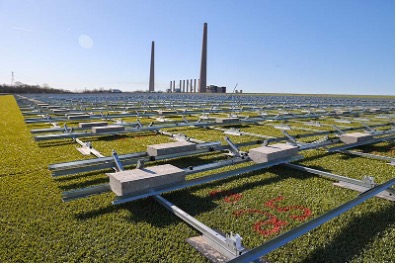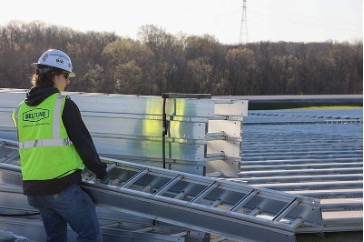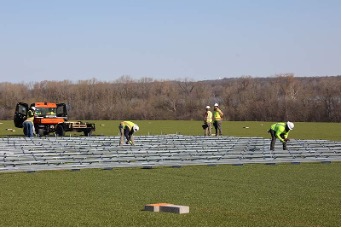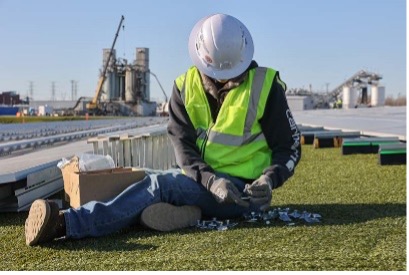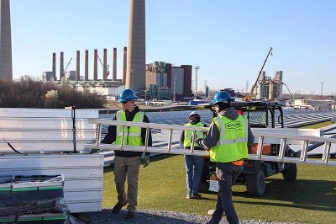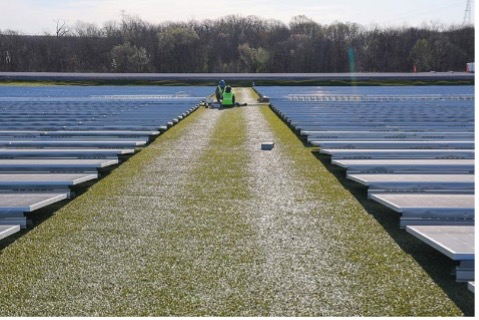May 6, 2025
Innovative Project Reimagines Land Use at Coal Site
On a swath of land northwest of Paducah, Kentucky, Tennessee Valley Authority is building the world’s first large-scale solar field on a closed coal ash site.
Once completed, Project Phoenix will feature 240,000 solar panels capable of generating 100 megawatts – enough to power about 58,500 homes.
And the project, located on TVA property just west of the Shawnee Fossil Plant, will produce that power using far less land than a typical industrial-scale solar project.
The solar array is scheduled to enter service in 2028, as TVA expands its generating capacity to keep pace with the rapidly growing demand for energy in the Valley region.
TVA senior project manager Adrian Finley said Project Phoenix is attracting attention by demonstrating an inspiring transformation.
“We are repurposing this area for a monumental project,” Finley said. “That’s why we have so many people and utilities coming out to visit this site.
“This could open the pathway for similar applications at other sites.”
Efficiency By the Acre
After completing a successful pilot in 2024, TVA greenlighted the full Project Phoenix.
Grading the site was the key first step. Crews shaped millions of cubic yards of stored coal ash into gentle hills, contoured to optimize drainage and solar generation.
The careful grading means solar panels can be placed close together and the land can be used efficiently, Scott Turnbow, TVA vice president for civil projects, said.
While most large solar projects require 1,000 acres to generate 100 megawatts, Project Phoenix will use only 270 acres to generate 100 megawatts.
That’s nearly four times more efficient.
Shannon Benton, plant manager at Shawnee Fossil Plant, said it’s an exciting project to be part of.
“As the name Project Phoenix comes from: ‘Out of the ashes,’” Benton said. “TVA is leading the industry right now and looking at repurposing land into viable megawatts to help the 10 million people we serve.”
Ballast Blocks and Cleats
After grading the coal ash, crews sealed the site with a closure cap system. They then installed specially engineered turf on top.
The next step was to groom a layer of manufactured sand into the turf to weigh it down and create an anchor for the hardware. Cleats lock the hardware into the turf without penetrating the impermeable cap. Heavy concrete blocks then add ballast, keeping the system stable in winds up to 100 mph.
Over the coming months, crews will move across the site section by section, installing racking and mounting systems, wiring, cables and combiner boxes.
And, of course, lots and lots of solar panels.
They’ll also hook up inverters and build a small substation – infrastructure that will deliver the site’s solar power to TVA’s grid.
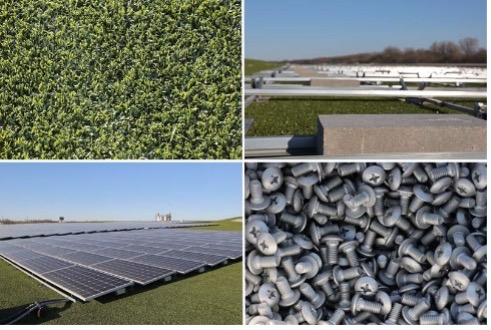
Concrete blocks provide additional stability to the solar frames, which are installed on specially engineered turf.
Long-Term Vision
Project Phoenix grows out of TVA’s innovative life-cycle approach to managing coal, Turnbow said.
“How do you get the full life out of coal? Coal ash is a byproduct of burning coal,” he said. “We look at coal as a natural resource, but coal ash is also a natural resource.”
TVA already sells coal ash for use in products such as concrete and wallboard.
Over time, Project Phoenix gives TVA flexibility to generate solar power or roll back the turf, harvest the coal ash and sell it.
Either way, the project generates value, Turnbow said.
“Long term, we end up getting to use every bit of the coal ash. But meanwhile, we’re getting value out of that property.”
TVA is evaluating coal ash sites at other current and former coal plants for similar treatment, grading the sites to optimize for solar and closing them with turf.
‘Dreamers With Shovels’
Turnbow, a 32-year TVA veteran who started as an intern, said Project Phoenix makes him think about an old book about TVA that he keeps in his office.
David Lilienthal, one of TVA’s first directors, wrote the book in 1944.
“One of the things he says in there is, this is a story about the people of the Tennessee Valley, about pioneers – ‘dreamers with shovels’ – who were creating tomorrow out of yesterday,” Turnbow said.
“When I read that, I get so inspired,” Turnbow said. “This is exactly what we’re doing. We’re building tomorrow out of yesterday.”
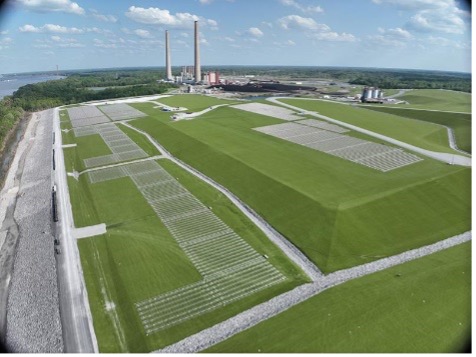
Project Phoenix is expected to use land almost four times more efficiently than most utility-scale solar projects.
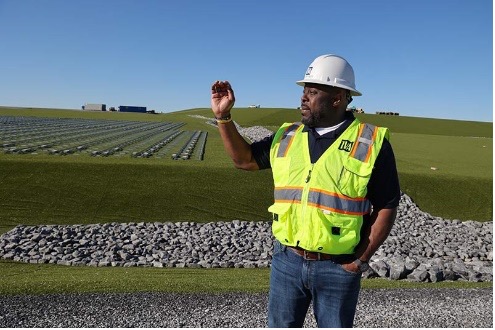
Senior project manager Adrian Finley said the project has been attracting visitors from other utilities.


